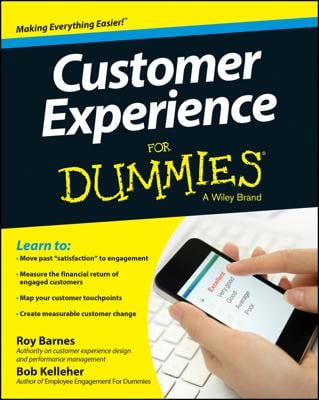Here are six helpful ideas and best practices to ensure that you are operating at peak efficiency as you satisfy and delight your customers. These days, all you hear about is how you need to be customer-focused by listening to the customer and delivering what they want when they want it with high reliability at a competitive price.
Literally hundreds of articles, books, blogs, and white papers, not to mention the thousands of opinions, perspectives, comments, and contributing seminars are generated every year on the subject. Happy, satisfied customers will return and share their thoughts with others, which will make the difference between whether you stay in business or not.
However, in all the excitement of determining how effectively you are satisfying your customers’ needs and expectations, very little is actually focused on how efficiently your organization is operating in order to enable these high levels of customer service performance.
Yet, inefficient customer service when taking orders or addressing complaints can and will bankrupt a company faster than any other type of failure. Focusing on how efficiently you service your customers and capitalizing on those best practices will enable your company to be consistently competitive.
Take a top-down approach
Most business owners, executives, and senior managers, when asked, nod their heads in complete agreement that excellent customer relations are the cornerstone of a successful business. In the final analysis, however, what matters isn’t what you say, it’s what you do. A manager’s actions can greatly enhance the staff's commitment to providing improved service.
For example, executives at a well-known communications company take complaint calls in the customer service department once a month. They personally follow up on the calls they answer until the issues are resolved. This allows them to keep the pulse of current issues and have a real understanding of what their team experiences on a daily basis.
Ask for feedback (And actually use it)
Many companies mistakenly assume that they know what their customers want. One of the first and most important steps in becoming customer-centric is taking steps to find out — rather than just assuming that you already know — what your customers want and expect of you.
You need to discover whether you’re meeting, and hopefully exceeding, their expectations. You can put your fingers on the pulse of your customers’ experience by conducting surveys and forming focus groups.
After you gather and analyze the data, be sure to close the loop by reporting any appropriate findings back to the people you surveyed.
Educate everyone, everywhere
Your front-line staff has the greatest amount of interaction with your customers. Many times, however, these are the workers within the organization who receive the least amount of education.
In this context, education means formal classroom-style training in which the objective is to build skills and awareness in specific areas of service excellence as well as any general improvement activities, including coaching sessions, team problem-solving meetings, and so on that illuminate the importance of service in those staff members’ specific jobs.
Create customer-centric systems
Often, in-focused systems, systems that work favorably for the company but unfavorably for the customer, serve as the fulcrum on which a successful move toward being customer centered rests. Companies must be willing to examine and change these systems to become more customer-centric. Until the inherent service problems caused by such systems are resolved, any service improvements are limited.
The prospect of creating customer-centric systems can be overwhelming. Part of the problem lies in the tangled web of procedures, policies, and actual technology that make up the systems and act as a blueprint for the way a company does business. Although obviously indispensable, these systems can help or hurt your customers and staff, depending on how they’re designed.
Quality groups or service-improvement teams work well when developing procedures and processes. They empower the entire staff to take ownership of the new procedures and processes and ensure that staff members who are the closest to the customers and know the most about the issues are an integral part of brainstorming service solutions.
Remember that changes in processes and technology need to be based on customer and employee feedback. After you’ve gathered feedback, you can use quality groups to design the new procedures and processes.
Develop consistency in customer service
Friendliness, courtesy, responsiveness, and accuracy are worthy goals, but how do you achieve them, given that they mean different things to different people?
If you ask ten people what being friendly to a customer means, you’ll more than likely receive ten different answers. You have to quantify service quality by developing specific, objective, and measurable service standards that translate service quality into specific behaviors and actions. Service standards provide a basis for the objective evaluation of staff performance and ensure consistency of treatment for customers across the board.
Remember: You must clearly communicate to your staff the behaviors that are required to meet these standards.
Recognize excellence every chance you get
In a company’s culture, what gets recognized and rewarded is what gets done. Every recognition program needs to have three important elements:
-
A formal recognition program: Formal recognition can be department-, division-, or company-wide. It needs to provide rewards for the individual or team that best fulfills specified service criteria. The rewards can include cash, movie tickets, vacations, lunch with the CEO, and so on.
-
An atmosphere of informal recognition: Casual, everyday acknowledgment of staff that’s often expressed by the manager’s spontaneous gestures is the idea here. It can be in the form of thank-you notes, pizza parties, sharing customers’ complimentary letters, and so on. Never underestimate the positive motivating force of recognition.

